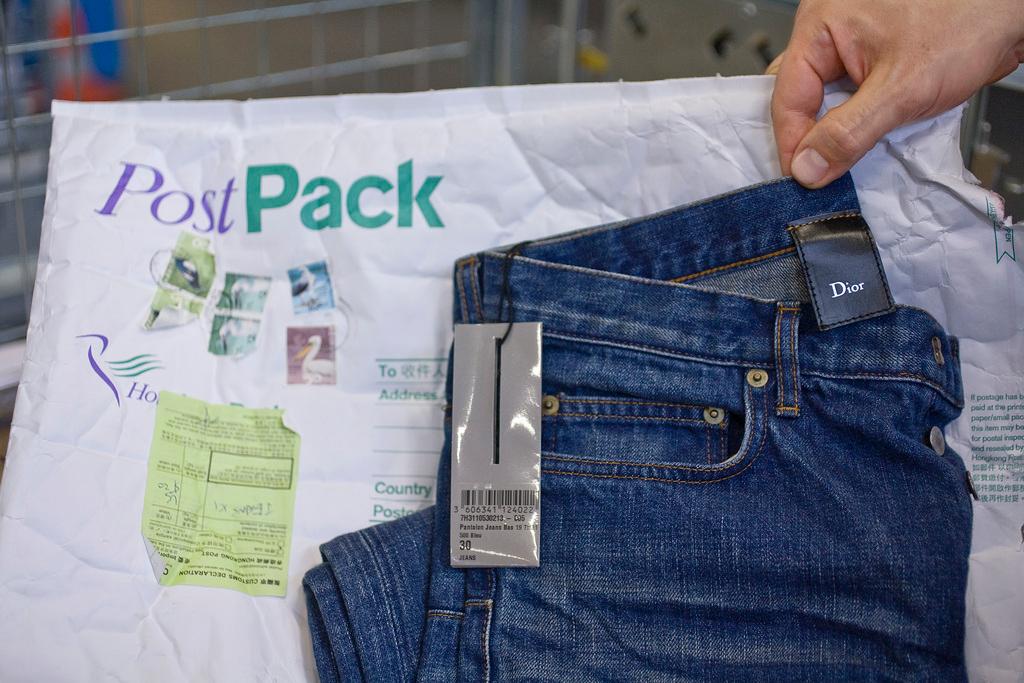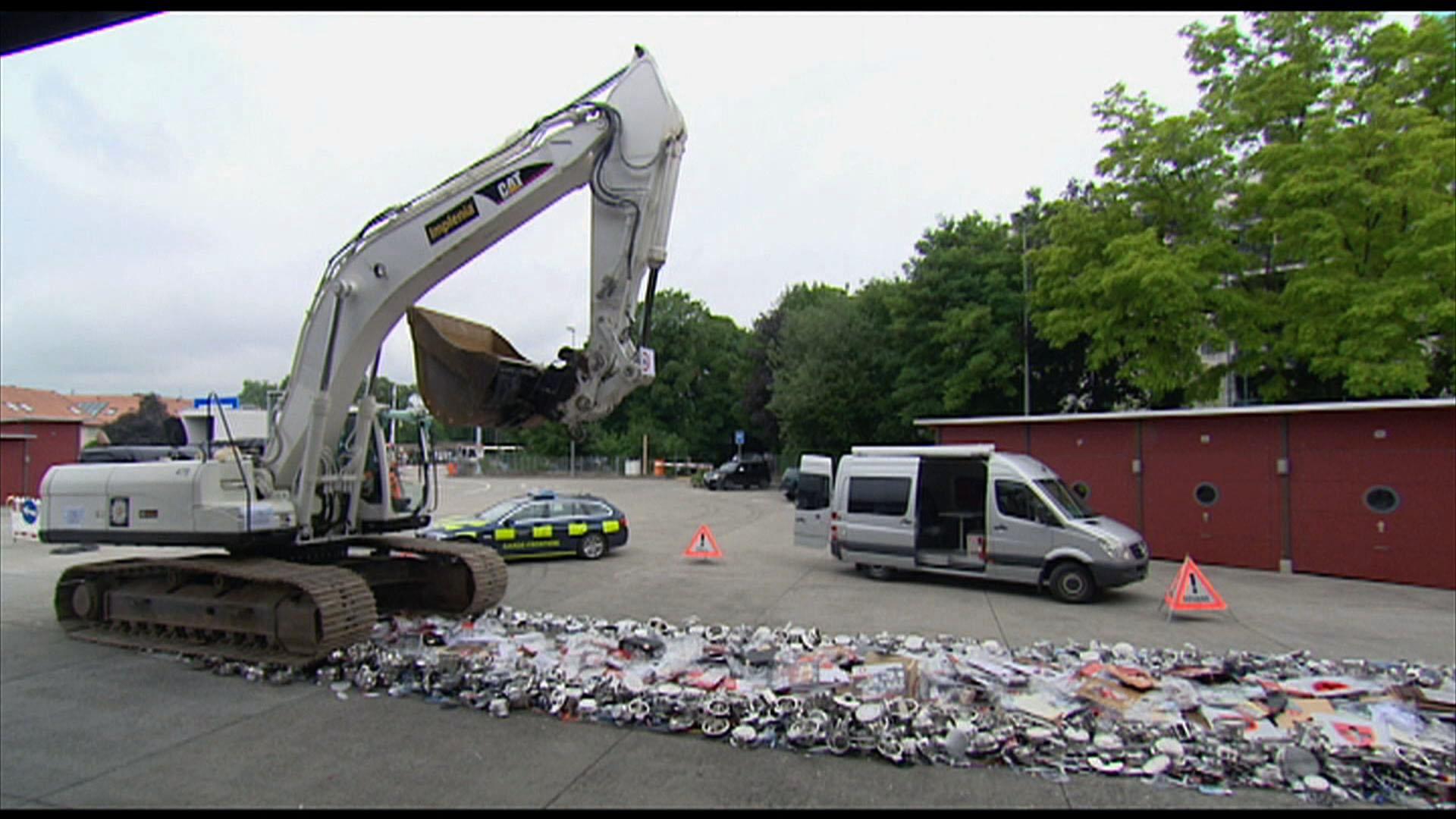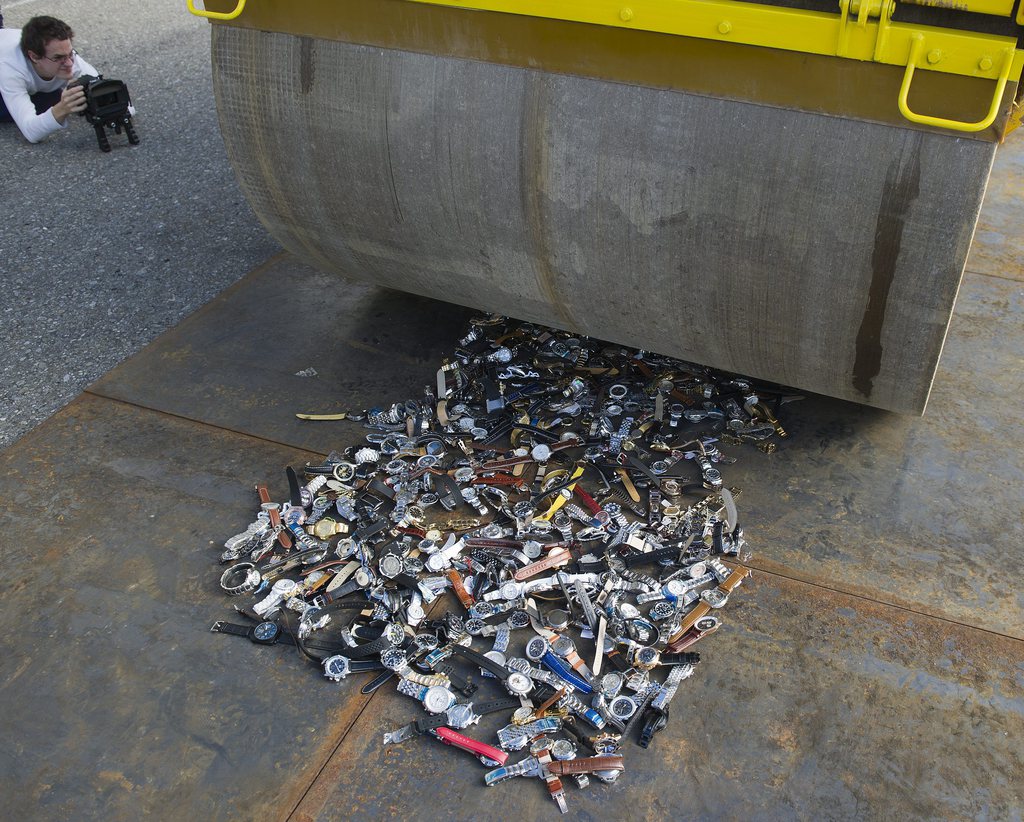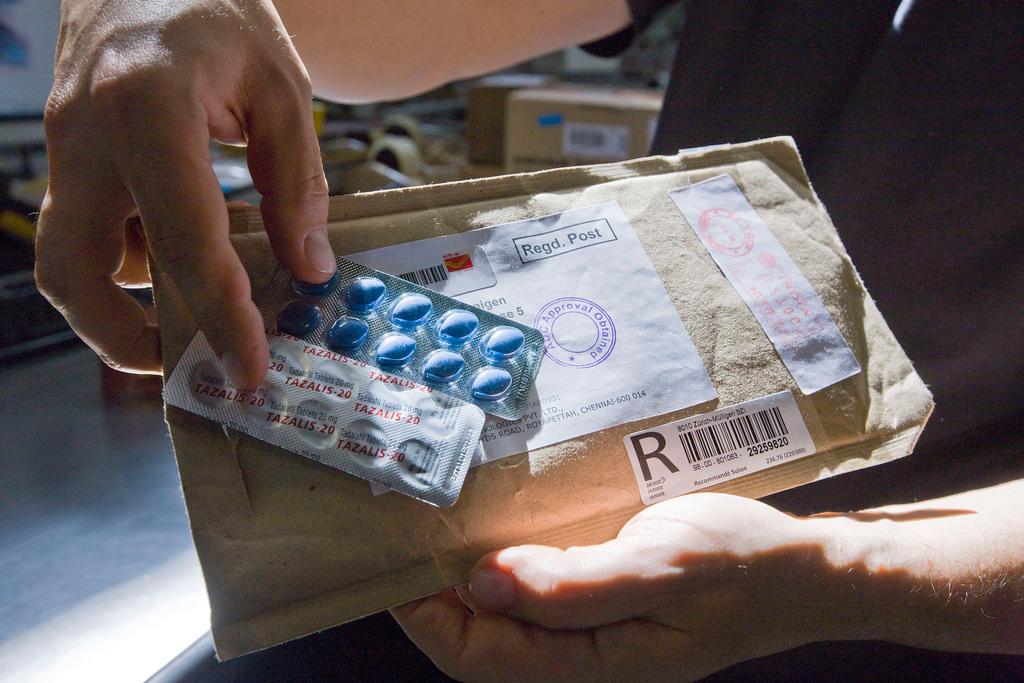Trade in fake brand-name goods continues to boom

Growing international trade is being matched by the illegal trade in counterfeit products, which particularly affects exporting countries such as Switzerland. Legal sanctions against producers and importers of fake brand-name goods have not stopped the lucrative business.
“When we find counterfeit items in luggage, most of their owners say they didn’t know these were fake products. That’s the typical reaction, not just in the case of counterfeits,” says Miroslaw Ritschard, deputy director of the customs office at Zurich airportExternal link.
“Then, when we talk to these people and ask them for an explanation – to tell us for example where they bought these products – a lot of them will admit it occurred to them that they might not be originals. Some admit they just tried to get away with it, but didn’t succeed.”
Every year in Switzerland customs officers detect 2,000 to 3,000 violations of the law on trademark and brand-name protection in tourist traffic alone. Most cases occur at Zurich airport, the main passenger hub, during the peak summer and autumn holiday periods.
The Zurich customs officers are particularly alert in October, when most tourists are returning from faraway destinations.
“Swiss customs are responsible for enforcing about 150 laws: protection of brands and trademarks but also designs, endangered species, cultural treasures and suchlike,” Ritschard explains.
“To be effective, we can’t just wait for passengers to arrive in Switzerland and do some spot checks. We usually target our investigations based on a risk profile: we know more or less what countries the counterfeit goods are coming from, at what time of year and what kind of products they are.”
So, for many tourists, returning from abroad can be a cause of headaches. Anyone caught with counterfeit goods has to accept that the goods will be confiscated and destroyed. That is the best-case scenario. But customs officials are also required to inform manufacturers of brand-name goods who have filed an application for protection of their products of any infractions they detect. In that case, the purchaser of the item risks being taken to court by the manufacturer.
Organised crime
With the speeding up of international exchanges of goods and services, counterfeiting is taking on worrisome dimensions throughout the world.
Customs officers in the EU countries confiscated over 36 million items of commercial goods suspected of violating intellectual property in 2013 alone. But this is just the tip of the iceberg. According to the UN Office on Drugs and CrimeExternal link (UNODC), the international trade in counterfeit products generates a turnover of $250 billion (CHF249 billion) a year.
The manufacturers of counterfeit goods usually avoid paying tax and they do great harm to the makers of the genuine brands.
Switzerland, with its strong export industry, is one of the countries hardest hit. What is worse, as the UNODC points out, this illegal trade is more and more under the control of organised crime syndicates like the Camorra in Naples, the Chinese Triads and the Japanese Yakuza. For them, it is a less risky revenue source from the point of view of legal sanctions than drug trafficking and other illegal kinds of trade.
The counterfeit manufacturers also produce their goods without adhering to social or environmental standards. The products are often made without respecting safety regulations, the rights or health of workers, or the ban on child labour. Risks are run not only by the producers, but the consumers too: fake medicines, fake foodstuffs and chemicals, and malfunctioning products have caused millions of victims throughout the world.
Online trading too
The trade in counterfeits has been tracked for some years by the UNODC and the World Customs Organization (WCO)External link, both of which encourage member states to beef up legal requirements and strengthen surveillance measures to curb this mushrooming phenomenon.
In Switzerland, the legislation was tightened in 2008 with a ban on importing counterfeit items. However, possession of such products is not grounds for prosecution, as the Federal Court determined last year.
“The goal of Swiss legislation as regards counterfeits and piracy is to keep these goods out of the Swiss market. It is not to criminalise individual consumers who in some cases may not be aware they are in possession of counterfeit goods,” notes Sabine Dändliker, head of Stop PiracyExternal link, an interest group started in 2007 by the government and private industry with the aim of raising public awareness of the problem of counterfeiting.
This action seems to be bearing some fruit: for several years now imports of counterfeit items carried by tourists have been in decline.
On the other hand, it is much harder for customs officers to get a grip on the enormous flow of counterfeit goods coming from all parts of the world by post or private shipping, by plane and over land.
This market is growing, especially thanks to the internet. Customs are noting an increase in counterfeit products bought online and imported in small quantities. The explosion in e-commerce has caught the legislators of almost every country unprepared.
The market for fakes
According to estimates from the OECD and UNODC, production of and international trade in counterfeit goods generate revenues of some $250 billion a year. The trade in digital piracy and counterfeit items within the producing countries is worth additional hundreds of billions of dollars.
The goods being counterfeited are not just luxury and brand-name items, but just about every kind of product: electronics and electrical goods, car parts, medicines, foodstuffs, products for home and cosmetic use.
Swiss export industries are particularly hurt by this trade. According to the Federation of the Swiss Watch Industry, 29 million genuine Swiss watches were produced in 2013 – and 33 million fakes.
Figures from the World Customs Organization (WCO) suggest that most counterfeits come from China, India, Singapore, the Emirates, Pakistan and Turkey.
Translated from Italian by Terence MacNamee

In compliance with the JTI standards
More: SWI swissinfo.ch certified by the Journalism Trust Initiative




You can find an overview of ongoing debates with our journalists here . Please join us!
If you want to start a conversation about a topic raised in this article or want to report factual errors, email us at english@swissinfo.ch.